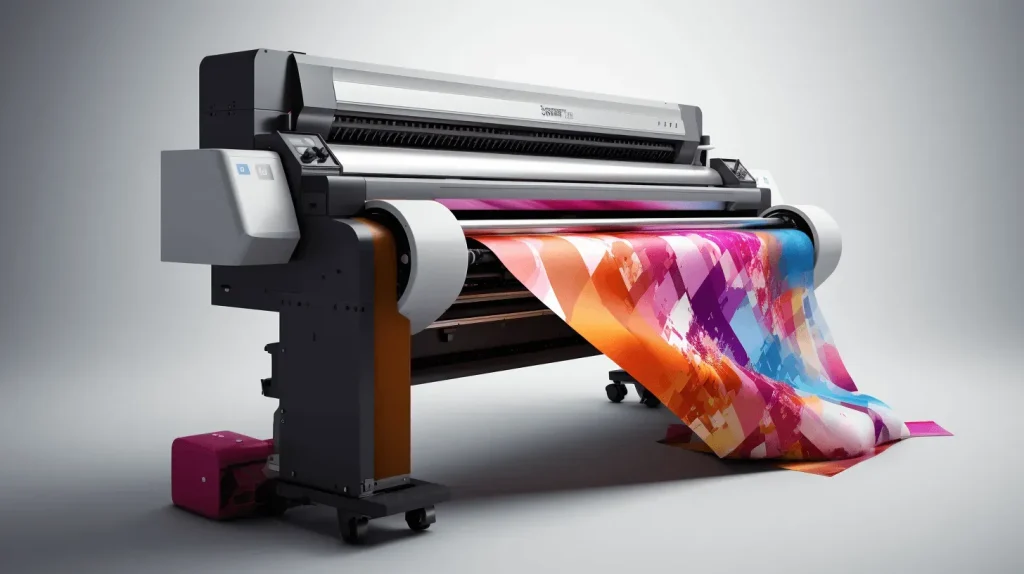DTF printing, or Direct-to-Film printing, is redefining the landscape of customized printing solutions. With its ability to produce vibrant, high-definition prints, DTF stands as a modern alternative to traditional printing methods like screen printing and Direct-to-Garment (DTG) printing. This innovative technique not only enhances the quality of custom apparel but also streamlines the printing process, enabling quick turnaround times. As businesses and consumers seek effective printing techniques that deliver exceptional results, understanding DTF’s advantages compared to traditional printing is essential. In this discussion, we’ll explore how the latest advancements in DTF printing are shaping the future of the industry.
Direct-to-Film printing, a cutting-edge approach in the world of fabric decoration, is rapidly gaining popularity among apparel businesses. This technique offers an impressive alternative to longstanding methods such as screen printing and Direct-to-Garment printing, making it an appealing option for custom designs. As the demand for personalized items skyrockets, understanding the implications of choosing DTF over traditional printing techniques is crucial. By examining the nuances of printing processes, businesses can make informed decisions that align with their goals for quality and efficiency. In the ever-evolving market, the relevance of DTF printing is clear, positioning it as a modern solution for diverse printing needs.
Understanding DTF Printing in Detail
Direct-to-Film (DTF) printing is a modern technique that has gained popularity for its ability to produce high-quality prints with stunning color accuracy. Unlike traditional printing methods, DTF allows for intricate designs to be printed directly onto a film, which is then transferred onto the fabric. This method is particularly advantageous when printing on a variety of fabric types, including those with dark backgrounds, enabling designs to remain vibrant and detail-rich. Businesses benefit from the ability to create personalized products without the need for extensive setup, making DTF a game-changer in the custom apparel industry.
Another significant advantage of DTF printing is its efficiency in handling small production runs, catering to the growing demand for bespoke fashion. Traditional methods like screen printing often impose high minimum order quantities, rendering small designs expensive. In contrast, DTF’s on-demand capabilities empower designers to experiment freely without financial constraints, fostering creativity and innovation. As technologies continue to evolve, DTF printing is set to enhance not only the printing process itself but also the overall customer experience.
Quality Comparison: DTF vs. Traditional Methods
When it comes to print quality, DTF printing excels over many traditional techniques. High-definition prints produced via DTF are notable for their vibrant colors and superior detail, thanks to the direct transfer from film to fabric. This method minimizes any loss of quality inherent in other printing techniques, making it suitable for complex designs that demand precision. Businesses looking to showcase detailed artwork and intricate patterns find DTF to be an invaluable method for achieving their desired results.
In contrast, while traditional methods like screen printing are recognized for producing durable prints, they often struggle with detail and color vibrancy in more complex designs. Screen printing typically requires multiple screens for different colors, which can dilute color quality when layers overlap. Consequently, businesses must weigh the need for high-quality prints against the cost and time associated with traditional printing methods and assess whether a pivot to DTF would enhance their product offerings.
Cost Efficiency in DTF Printing
Cost-effectiveness plays a crucial role in the decision-making process for businesses selecting a printing method. DTF printing, while initially seeming pricier due to the cost of films and specialized inks, reveals its advantages in scenarios involving smaller batches. The elimination of extensive setup times often seen in traditional printing means that businesses can save on labor costs, allowing them to offer competitive pricing for custom prints. Consequently, DTF presents itself as a financially viable option for those needing adaptability without sacrificing quality.
Conversely, traditional methods like screen printing become more cost-effective with larger production runs, where the per-unit cost significantly decreases. However, for small orders, the financial burden of setup fees can dissuade potential customers, calling into question the viability of traditional methods for businesses needing low-volume bespoke solutions. Understanding these differences empowers designers and business owners to choose the most suitable printing method based on their scale and budget.
Environmental Considerations in Printing Techniques
Environmental sustainability is an increasingly important consideration in the printing industry, and DTF printing is positioned favorably in this regard. With advancements leading to the adoption of water-based inks, DTF significantly reduces the hazardous substances typically found in traditional plastisol inks. The overall waste generation in DTF printing is also less than that of traditional methods, resulting in a lower ecological footprint. For businesses prioritizing eco-conscious practices, DTF offers a compelling choice that aligns with modern consumer expectations.
On the other hand, traditional printing methods, especially screen printing, have made strides towards sustainability but still grapple with waste issues. The process of cleaning inks, maintaining screens, and disposing of materials often contributes to a more considerable environmental impact. Companies in this space are urged to explore greener alternatives, but the transition remains a challenge. A thorough evaluation of environmental practices can guide businesses in not just meeting regulatory requirements but also appealing to the growing segment of environmentally conscious consumers.
Turnaround Times: Speed Matters
In today’s fast-paced market, turnaround time is a vital factor influencing customer satisfaction and business efficiency. DTF printing thrives in this aspect, providing businesses with the ability to produce custom garments quickly. The absence of lengthy setup processes associated with traditional printing methods means that DTF can fulfill orders almost instantly, a crucial advantage in meeting tight deadlines and responding to last-minute customer requests.
Traditional methods, including screen printing, often face challenges related to setup and drying times, significantly slowing production. For businesses handling bulk orders, this delay is manageable, yet it can become a critical hurdle when operating in industries that demand quick turnarounds. As customer preferences shift towards rapid fulfillment, adopting efficient printing technologies like DTF might be essential for remaining competitive in the marketplace.
Current Market Trends: The Shift in Printing Technologies
The printing industry is witnessing a significant shift, with DTF printing rapidly gaining market traction. Driven by its versatility and ability to meet the increasing demand for personalized products, DTF is becoming a staple among custom apparel creators. The technology’s enhancements and growing acceptance signify that traditional methods may need to adapt or innovate to maintain relevance. The trend towards on-demand and bespoke fashion illustrates how DTF printing aligns seamlessly with contemporary consumer behavior, providing an avenue for businesses to captivate a broader audience.
Meanwhile, traditional printing methods like screen printing continue to play a critical role, particularly for large bulk orders requiring standardization and durability. Established businesses still rely on these methods for reliability in production quality. However, the market now requires an understanding of emerging trends, urging businesses to consider integrating technologies like DTF into their portfolios. By balancing traditional methods with innovative printing solutions, businesses can enhance their offerings and satisfy an increasingly diverse clientele.
Frequently Asked Questions
What is DTF printing and how does it compare to traditional printing methods?
DTF printing, or Direct-to-Film printing, is a modern printing technique that transfers designs onto fabrics using special films. It offers high-definition prints with vibrant colors, ideal for intricate designs on various fabric types. Compared to traditional printing methods like screen printing and Direct-to-Garment (DTG) printing, DTF excels in detail, turnaround time, and waste reduction.
Is DTF printing more cost-effective than traditional printing?
While DTF printing has a higher initial investment due to the costs of specialized films and inks, it proves to be cost-effective for small batches due to minimal setup times. In contrast, traditional printing methods like screen printing are more economical for large runs, making the choice depend on your specific order size and budget.
What environmental benefits does DTF printing have over traditional printing methods?
DTF printing utilizes water-based inks that are less hazardous than traditional plastisol inks commonly used in screen printing. Additionally, DTF produces less waste, contributing to eco-friendliness, whereas traditional methods often generate significant waste during ink cleaning and setup.
How quickly can orders be fulfilled using DTF printing compared to traditional techniques?
DTF printing excels in turnaround times, especially for print-on-demand orders, as it eliminates the extensive setup required by traditional methods. This efficiency allows businesses to meet tight deadlines effectively, unlike traditional printing, which can slow down production due to lengthy setup and drying times.
What is the quality difference between DTF printing and Direct-to-Garment (DTG) printing?
DTF printing offers superior quality with high-definition, vibrant colors suitable for intricate designs on various fabrics. While DTG printing also provides excellent quality, it can sometimes struggle with complex designs on dark fabrics. DTF’s versatility and detail make it a strong competitor in printing quality.
Are there market trends favoring DTF printing over traditional printing techniques?
Yes, there is a growing trend towards DTF printing, especially among small businesses and custom apparel creators. Its versatility and rising demand for personalized products are making it a formidable alternative to traditional methods like screen printing, which remain strong for high-volume production. Businesses are encouraged to explore both methods to stay competitive.
| Aspect | DTF Printing | Traditional Printing |
|---|---|---|
| Quality and Detail | High-definition prints with vibrant colors and detail, suitable for any fabric. | Great for bulk orders, good color but less detail with complex designs. |
| Cost Efficiency | Higher initial investment but cost-effective for small batches with minimal setup. | More economical for large runs but expensive for small orders due to setup costs. |
| Environmental Impact | Uses water-based inks, produces less waste, more sustainable option. | Traditionally uses plastisol inks, generates more waste, less eco-friendly. |
| Turnaround Time | Excels in quick deliveries, suitable for print-on-demand. | Slower due to extensive setup, not ideal for tight deadlines. |
| Market Trends | Rapidly gaining traction, popular among small businesses and custom apparel. | Still dominant for large orders, but adapting to new consumer preferences is essential. |
Summary
DTF printing has revolutionized the printing industry with its modern techniques, allowing for high-quality, customizable prints that cater to diverse textile needs. As businesses and consumers weigh the pros and cons of DTF printing compared to traditional methods, it becomes evident that DTF printing offers significant advantages, especially in terms of detail, cost efficiency for smaller orders, and environmental sustainability. With quicker turnaround times and a growing market presence, DTF printing is positioned to become the preferred choice for many looking for advanced printing solutions. Understanding these distinctions not only aids in making informed decisions but also ensures that printing practices align with current trends and consumer demands.



